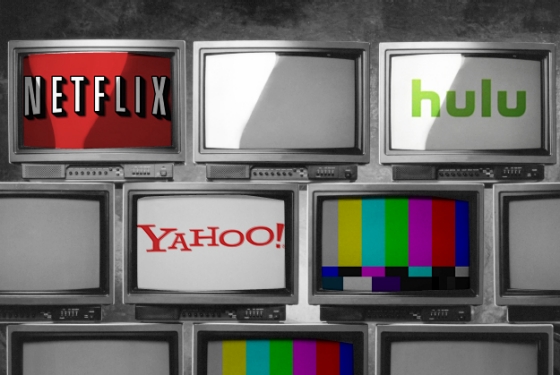Begun, The Turf War Has
Recently the bastions of online video, no longer satisfied with “digital dollars,” have made some of their boldest grabs yet at television’s multi-billion dollar advertising business by emulating the look, feel and business of…television. Welcome to progress.
Let’s review:

YouTube, the birthplace of the web series, the king-maker of online celebrity, the petri dish of viral video, spent $100 million on re-positioning itself as the second coming of cable television with 100 new channels of advertiser-friendly, day-parted original programming.
Netflix paid $100 million to exclusively distribute two seasons of the Kevin Spacey/David Fincher drama House of Cards; then dropped another tidy sum to revive and distribute new episodes of the Emmy-winning Fox comedy Arrested Development. Wanna bet Netflix leads a lobby with the Academy of Television Arts & Sciences to get streaming originals on the Emmy ballot?
Yahoo, which already boasts nearly 50 million monthly video streams, ramped-up its slate of online originals and is now building a 5,000 square-ft. studio in New York’s Times Square where it will co-produce content with ABC News; and My Damn Channel, which is also building a new studio to produce My Damn Channel Live, began financing pilots for its network.
Hulu premiered its own original series A Day in the Life and invested in the promotion and distribution of more off-network shows like Leap Year*, Battleground, The Booth at the End. In fact, after five seasons and multiple distributors, Goodnight Burbank was picked-up for television this year by HDNet; while Mercury Men, Riese, Suite 7*, Lenox Ave, Odessa, Asylum and What’s Trending - original shows produced for the web – were at some point distributed online by TV networks like Syfy, Lifetime, BET and CBS respectively, indicating lines can blur from both directions.
I know, I know. The web is its own unique entertainment platform separate from television and why can’t we just be proud of that? We have and we should, but years of touting the unique benefits of online vs. television will never be enough to compel advertisers to make a measure-able shift in spending. It doesn’t matter if there are arguably better-quality shows with even bigger viewing audiences online. The issue is scarcity which, by design, the web will never have and network television always will.
On television there are only so many available ad slots, so many networks and so many programmable hours in a 24-hour day. Compare that to the 48-hours of video uploaded every minute to YouTube alone. I’m not entirely sold on the long-term viability of YouTube’s “100 channels” strategy. You can’t create scarcity on a free, open platform anyone can upload content to by increasing the volume of content, ‘advertiser friendly’ or not. I suspect by adopting this TV-like approach to advertisers, and since it’s unlikely it will eliminate user-submitted videos, YouTube will begin downplaying those partners outside “the new 100? who had previously dominated the world’s third-largest website. I hope I’m wrong about that, but I fear it’s inevitable.
These are game-changing times for the online video industry and not everybody is down with the way the game has changed. Some consider likening the web to television as an opportunity for progress, others consider it digital heresy. Regardless of your personal stance, we are in for a polarizing year ahead. Game on.
